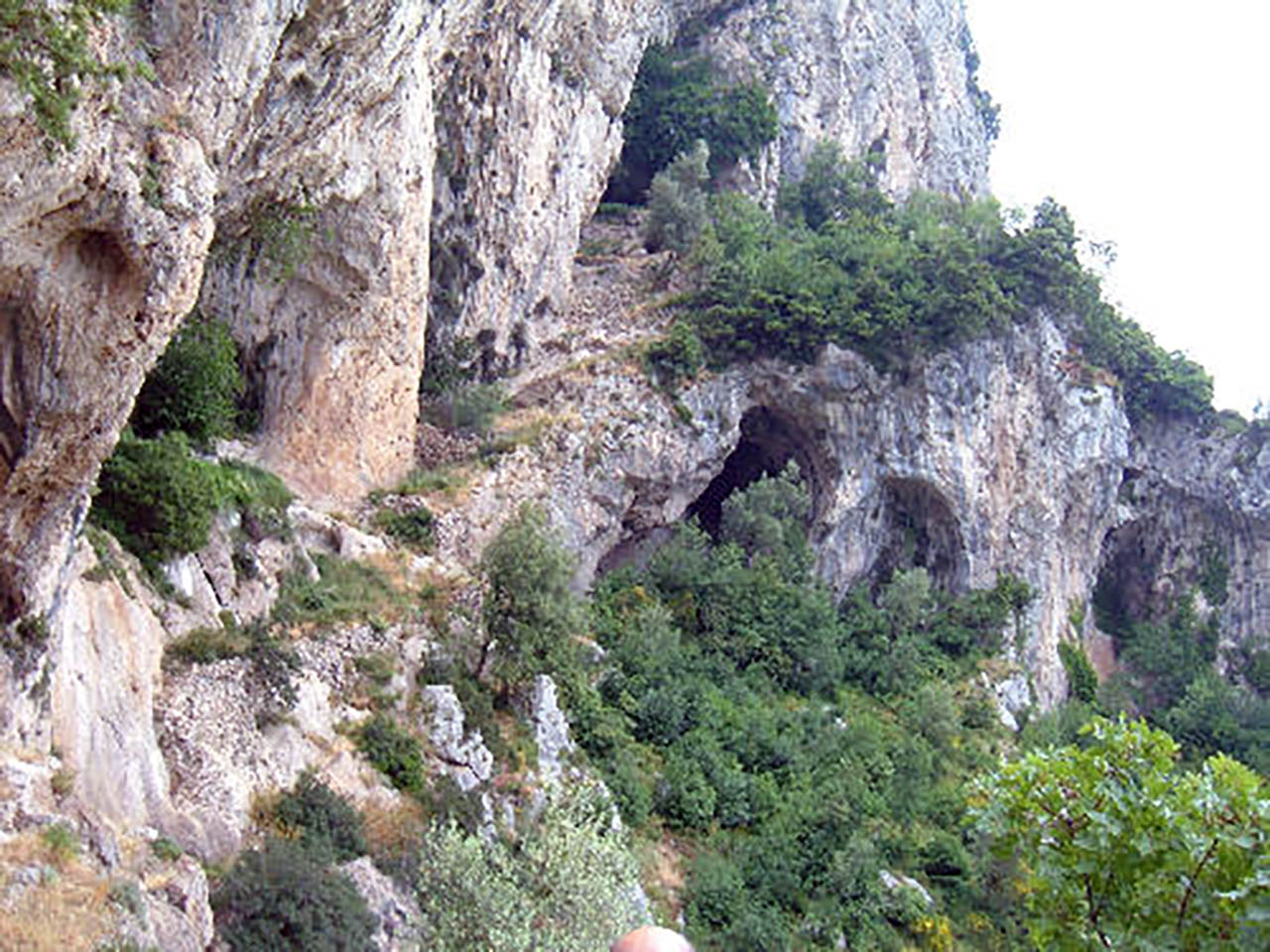Cliffside Sanctuaries: The Earliest Settlements on the Amalfi Coast
by Raffaele Ferraioli, 17 April 2021. Repost 24 June 2025
The Farraiuolo’s Cave Dwelling in Centena, Furore
The Hidden Amalfi Coast, “la Costiera annascunnuta” in the local dialect, might well describe a lesser-known stretch of the coastline, a discreet and solitary guardian of memory. Here, nestled high in the rugged cliffs that hang above Homer’s waves, lie the ancient rupestrian sites, a scattered constellation of natural shelters and rock-carved dwellings, some secular, some sacred. Together, they form the earliest traces of human settlement in this divine landscape.
Cultural treasures lost to time
Neglected for centuries, this remarkable cultural legacy was brought to light a few years ago when the local mountain community commissioned a study by the Centre for Amalfitan History and Culture. The aim was simple but ambitious: to locate, catalogue and, if possible, reintroduce these sites into the public imagination by including them in integrated tourist itineraries, in line with a growing demand for slow, cultural travel.
To carry out the task, the Centre assembled a group of university scholars with expertise in archaeology and cultural heritage. They charted the locations, assessed their condition, photographed the remains, and even traced the current owners of the dwellings.
A silent heritage scattered through the cliffs
It was an outstanding project, though, sadly, it never led to publication, as originally planned. Hence this series of short articles: drops in a still pond, intended to stir awareness, curiosity, and perhaps even action, among locals, visitors, and all who love this coast.
The list of known sites, surely incomplete, is as follows:
Vietri sul Mare: Powder Magazine of Bonea
Ravello: Church of Sant’Angelo dell’Ospedale
Amalfi: Cave of the Holy Trinity in Tovere
Furore: Hermitage of Santa Barbara; the dwellings of Centena; Stables of Cichere; the Powder Magazine of Pino; Pizzocorvo House; Caramante House in Schiato
Scala: Grotto of the Saviour in Pontone
Tramonti: Chapel of Sant’Angelo in Gete
Maiori: Hermitage of Santa Maria de Olearia
Minori: Church of the Annunziata
Praiano: Grotto of Cerasuolo
Positano: Santa Maria del Castello
From Roman refugees to solitary monks
The proliferation of these dwellings across the Amalfi Coast began with the arrival of Roman refugees fleeing barbarian invasions. Upon reaching this wild and vertical land, they discovered the many natural caves hidden among the cliffs, and quickly realised these offered a double advantage: protection from outside threats and a way to avoid the cost and labour of building from the ground up.
Safe, affordable, and already halfway to being homes, these caves became the foundations of early coastal life. Later came the hermits. In the absence of monasteries or structured cenobitic life, they found solitude and spiritual refuge in these remote recesses of stone. Over time, some of these solitary lives gave rise to small monastic communities, often forced to hide during waves of persecution. Many of their convents, long since deconsecrated, have today become refined boutique hotels.
Think of the Capuchin Convent and Hotel Luna in Amalfi, or Santa Rosa Monastery in Conca dei Marini.
A peasant miller’s cave home
One of the most evocative of all is the Farraiuolo’s Cave Dwelling in Centena, Furore – once home to ‘Ngiulillo, a farmer and miller of humble farro grain, known in these parts as the poor man’s wheat.
The dwelling consists of two adjacent caves at the foot of the Pizzocorvo cliff, some 20 metres apart and set at a similar elevation above the valley floor. The eastern cavity served as living quarters; the western one was the workshop, where the genial ‘Ngiulillo both laboured and philosophised.
“’Ngiulì, what’s the news today?” passers-by would ask him.
With a wry grin, he’d reply, “Sardines are eating the anchovies…” – a cryptic remark full of peasant wit and layered meanings.
An architecture of simplicity
The structure is rudimentary, essential – and all the more beautiful for it. Built directly into the rock face, the rear and side walls blend seamlessly with the natural cave. Inside, you can still make out the remains of a hearth and a small basin for collecting rainwater.
The masonry combines rough stones and lime mortar in the traditional opus incertum technique. The roof is made of chestnut beams and chiancarelle tiles, topped with a lightweight screed of pumice, clay, and lime, carefully compacted to create a waterproof layer.
As poet Antonello Leone wrote:
“Pietre mitiche/dove l’eco ripensa/ alla grecità del tempo/ ora vestita con piume di ferro laggiù /per oltrepassare, in chiarore,/ il peso di antiche dimore,/ recita Antonello Leone, il mare/ traduce silenzi…/ nasconde i tuoni/ per il riparo degli orti.”
“Mythic stones / where echoes reflect / the Grecian soul of time – now feathered in iron / descending to light / the burden of ancient dwellings. / The sea / translates silence… / it buries thunder / to shelter the gardens.”
This site lies at the entrance to the Ravens’ Nest Path, which leads to the Chapel of Sant’Alfonso, the Hermitage of Santa Barbara, and then – across the Valley of the Outlaws – on to Agerola, where it meets the celebrated Path of the Gods.
Reclaiming our roots
To walk among these places, to explore and rediscover them, is to reclaim something vital: our heritage. Our true identity. Not the one others assign to us, but the one passed down by our ancestors.
This, what anthropologists call “cultural militancy”, isn’t about nostalgia. It’s about pride: in who we are, not in what others would prefer us to be.
And when you think about it, rediscovering authenticity isn’t just something we owe ourselves – it’s a gift we offer to everyone who comes here seeking something real.

